Make Money Blogging is no longer just a hobby — it’s a legitimate way to earn a full-time income online. Millions of people around the world are generating substantial revenue through blogs, ranging from a few hundred dollars to over six figures per month. The rise of digital marketing, social media, and online communities has expanded the potential for bloggers to monetize their content in creative ways.
Whether you are passionate about lifestyle, technology, finance, travel, or education, blogging offers opportunities to reach a global audience, share knowledge, and generate multiple income streams. In this guide, you will learn step-by-step methods, actionable tips, and proven strategies to turn your blog into a profitable business.
How Much Money Can You Make Blogging?
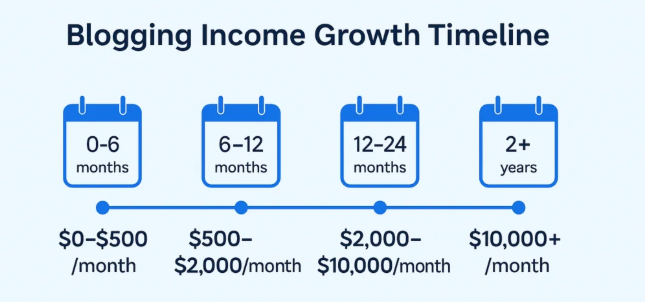
The amount of money you can make depends on several factors:
-
Niche Selection: Certain niches like finance, tech, health, and digital marketing tend to be more profitable due to higher ad rates and affiliate commissions.
-
Traffic Volume: The more visitors your blog receives, the more potential there is for ad clicks, affiliate sales, and product purchases.
-
Marketing Skills: Knowledge of SEO, email marketing, social media, and content promotion is crucial for driving traffic and conversions.
-
Consistency: Regular posting builds authority, trust, and a loyal readership, which directly impacts monetization.
-
Personal Branding & Networking: A strong online presence allows you to attract premium brand deals, sponsorships, and collaborations.
Example: Many bloggers start earning around $100–$500 per month in their first year. With consistent effort and growth, it’s possible to reach $5,000–$10,000/month or even more. Some top bloggers make over $50,000/month from multiple income streams.
-
Chart: Blog income growth timeline from $0 to $50,000/month
-
Alt text: Example of blog income growth over time
Ways to Make Money Blogging
There are multiple strategies for monetizing a blog. Some methods require beginner-level skills, while others need advanced knowledge. We’ll cover all practical ways, their implementation, and real-world examples.
1. Ad Networks – Beginner-Friendly Monetization
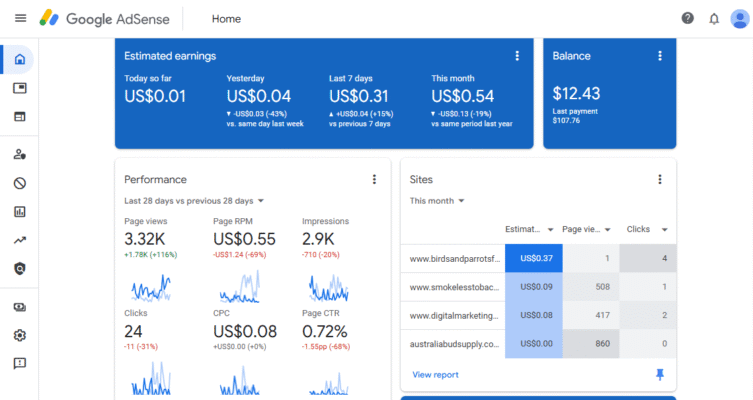
Ad networks are one of the simplest methods to monetize your blog. These networks automatically place ads on your blog based on your content and visitor interests.
Popular Ad Networks:
-
Google AdSense: Ideal for beginners, offers quality ads, and pays per click or impression.
-
Mediavine & AdThrive: Premium networks for established blogs with significant traffic.
-
Setupad: Offers competitive RPM rates for small- to medium-traffic blogs.
Tips to Optimize Ad Revenue:
-
Place ads above the fold, within content, and in the sidebar strategically.
-
Use fewer high-quality ads rather than cluttering the page.
-
Track performance and test different ad formats and placements for maximum CTR.
Pro Tip: One high-paying ad is often better than multiple low-paying ads. As your traffic grows, you can apply to premium ad networks like Mediavine, which require at least 50,000 monthly sessions but pay significantly higher RPMs.
2. Affiliate Marketing – Most Profitable Strategy
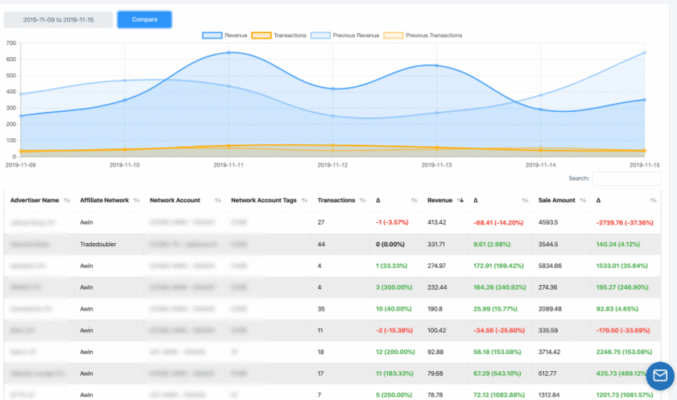
Affiliate marketing is one of the most effective ways to monetize a blog. You earn a commission when visitors purchase products or services using your referral links.
Why Affiliate Marketing Works:
-
High potential earnings per sale compared to ad clicks.
-
Flexibility to promote multiple products or services.
-
Works on any blogging platform: WordPress, Medium, Wix, or even LinkedIn.
Steps to Start Affiliate Marketing:
-
Choose Relevant Products: Pick products or services that match your niche and audience interests.
-
Create High-Quality Content: Write in-depth reviews, tutorials, or “best-of” lists.
-
Use Multiple Promotion Channels: Email newsletters, social media posts, and SEO-optimized content.
-
Optimize for Conversions: Include comparison charts, call-to-actions, and links in strategic positions.
Popular Affiliate Networks:
-
Amazon Associates
-
ShareASale
-
PartnerStack
-
Impact
Pro Tip: Focus on high-ticket items for better revenue. Many top bloggers earn the majority of their income from affiliate marketing because it can scale without requiring constant content creation.
3. Selling Digital Products

Digital products allow you to earn 100% of the revenue without sharing commissions. Examples include ebooks, printables, templates, and online tools.
How to Launch Digital Products:
-
Identify the problems your audience faces.
-
Create a comprehensive solution in the form of an ebook, template, or checklist.
-
Promote products through blog posts, email campaigns, and social media.
-
Use platforms like Gumroad, WordPress Easy Digital Downloads, or Amazon KDP.
Pro Tip: Bundling multiple products increases perceived value. For example, offer a “Make Money Blogging toolkit” containing an ebook, templates, and a checklist.
4. Native Advertising
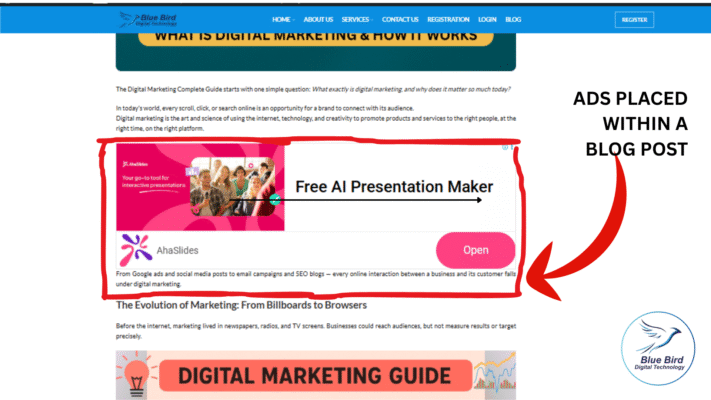
Native ads integrate seamlessly with your content and are less intrusive than traditional banner ads. They are especially effective for blogs with high traffic and niche-specific content.
Popular Native Ad Networks:
-
Taboola
-
Outbrain
-
MGID
Tips for Success:
-
Match the ads to your blog’s tone and style.
-
Place ads within content or between paragraphs for higher CTR.
-
Track and analyze which placements generate the most revenue.
5. Launch Online Courses – Advanced Monetization
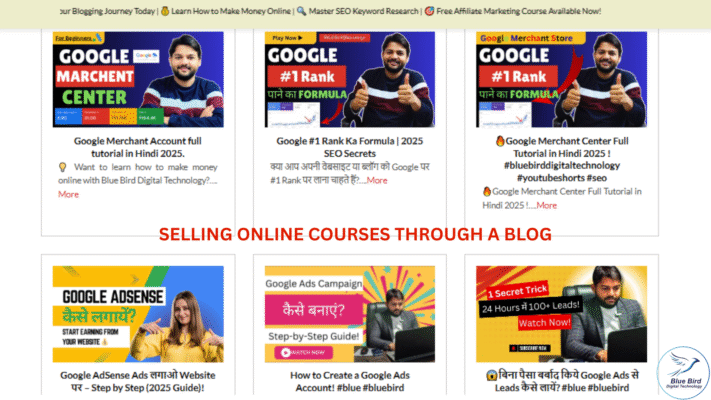
If you are an expert in your niche, teaching online courses is highly lucrative. Video courses, guides, and checklists can be sold repeatedly for passive income.
Steps to Create an Online Course:
-
Identify in-demand topics in your niche.
-
Create video lessons, downloadable resources, and checklists.
-
Sell courses via LearnDash, Teachable, or Kajabi.
-
Promote using blog posts, email marketing, and social media campaigns.
Pro Tip: Offer multiple pricing tiers (basic, premium, VIP) and early-bird discounts to boost initial sales.
6. Direct Advertisements
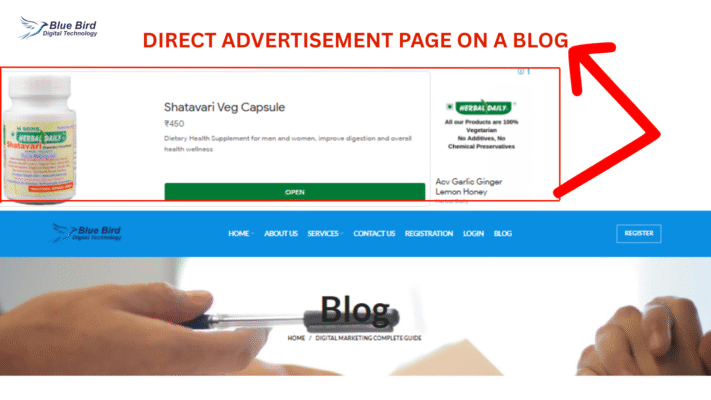
Direct advertisements involve selling ad space directly to brands. This often pays more than networks like AdSense.
How to Start:
-
Create a professional “Advertise with Us” page with traffic stats.
-
Reach out to brands via email using a professional domain email.
-
Track leads using HubSpot CRM or similar tools.
Tips:
-
Offer multiple ad placements and bundle deals.
-
Focus on niche-specific advertisers for better engagement.
-
Update ad rates as your traffic grows.
[Suggested Image]
-
Image: Example “Advertise with Us” page
-
Alt text: Direct advertisement page on a blog
7. Sponsored Reviews
Sponsored reviews are posts where brands pay you to review their products or services.
Tips for Success:
-
Only review products relevant to your audience.
-
Be transparent about sponsorships to maintain trust.
-
Combine sponsored reviews with affiliate links for dual revenue.
[Suggested Screenshot]
-
Image: Blog post labeled “Sponsored Review”
-
Alt text: Example sponsored review on a blog
8. Brand Campaigns & Collaborations

Collaborate with brands for online campaigns, webinars, social media promotions, or content marketing.
Benefits:
-
High revenue per campaign
-
Expands audience reach
-
Enhances credibility and long-term relationships
Tips:
-
Approach brands relevant to your niche.
-
Use analytics and audience stats to negotiate deals.
-
Cross-promote campaigns for maximum ROI.
[Suggested Image]
-
Image: Blogger collaborating with a brand online
-
Alt text: Brand collaboration example
9. Offering Services

Offer services related to your skills, such as SEO consulting, web design, content writing, or digital marketing.
How to Start:
-
Create a service page on your blog detailing offerings and pricing.
-
Use a contact form and automated emails for inquiries.
-
Deliver quality work to gain referrals and long-term clients.
Tips:
-
Start small with 1–2 clients and scale gradually.
-
Automate payments and follow-ups for efficiency.
-
Use freelancing platforms to expand client base.
Additional Tips to Maximize Revenue
-
Blend blogging with vBlogging to engage audiences through multiple formats.
-
Focus on SEO to drive organic traffic.
-
Diversify income streams for financial stability.
-
Use analytics tools to track performance and optimize monetization.
-
Build an email list to promote products and courses directly.
Step-by-Step Strategy to Build a Profitable Blog in 2025
Simply knowing monetization methods isn’t enough — you need a clear roadmap to implement them effectively. Here’s a step-by-step approach:
Step 1: Pick the Right Niche

Your niche determines everything — traffic potential, monetization, competition, and your passion. A profitable niche usually meets these criteria:
-
High demand: Use tools like Google Trends or Ahrefs to identify topics with growing interest.
-
Profitability: Finance, digital marketing, health, and tech generally offer high-paying affiliate programs and ad rates.
-
Low-to-medium competition: Too much competition makes it hard to rank, while zero competition often means no audience.
-
Personal interest: You’ll need to produce consistent content over months or years, so choose something you enjoy.
Step 2: Set Up a Professional Blog
A self-hosted WordPress blog is ideal for long-term growth.
Steps to set up:
-
Purchase a domain and hosting (SiteGround, Bluehost, or Cloudways).
-
Install WordPress and choose a lightweight, responsive theme.
-
Set up essential plugins: SEO (Yoast), caching (WP Rocket), security (Wordfence), and analytics (Google Analytics).
Pro Tip: Avoid free platforms like Blogger or Wix if your goal is serious monetization — self-hosting gives you full control and better SEO advantages.
-
Alt text: WordPress blog setup for monetization
Step 3: Create High-Quality Content
Content is the backbone of any successful blog. Focus on value, uniqueness, and readability.
-
Keyword Research: Identify long-tail keywords using tools like Ahrefs, SEMrush, or Ubersuggest.
-
Content Structure: Use headings, subheadings, bullet points, and short paragraphs for readability.
-
Multimedia: Include images, infographics, videos, and charts to enhance engagement.
-
Internal Linking: Connect related articles to improve SEO and keep users on your site longer.
-
Alt text: Example of SEO-friendly blog post content
Step 4: Drive Targeted Traffic
Even the best Make Money Blogging won’t earn if no one sees it. Combine organic and paid traffic strategies:
-
SEO: Optimize every post with primary and secondary keywords, meta descriptions, and alt tags.
-
Social Media Marketing: Share content on Facebook, Instagram, LinkedIn, Pinterest, and Twitter.
-
Email Marketing: Build an email list and nurture your audience with newsletters and product updates.
-
Paid Ads: Start with Facebook or Google Ads for high-converting content once you have a proven offer.
Pro Tip: Focus on one traffic channel first (usually SEO) and scale gradually to avoid spreading yourself too thin.
-
Alt text: Blog traffic sources example
Step 5: Monetize Strategically
Now that traffic is flowing, it’s time to implement monetization methods in phases:
-
Start with Ad Networks: Begin with AdSense to gain initial revenue and understand ad placements.
-
Introduce Affiliate Marketing: Identify 2–3 relevant affiliate programs and integrate links naturally into content.
-
Launch Digital Products: Once authority is established, sell ebooks, checklists, or templates.
-
Offer Services: Use your blog to promote consulting, freelance work, or coaching.
-
Upsell with Online Courses: Convert your content expertise into video courses or membership sites.
Pro Tip: Don’t overwhelm yourself by doing everything at once. Focus on implementing one monetization method at a time and scale gradually.
Case Study: Example of a Successful Blogger
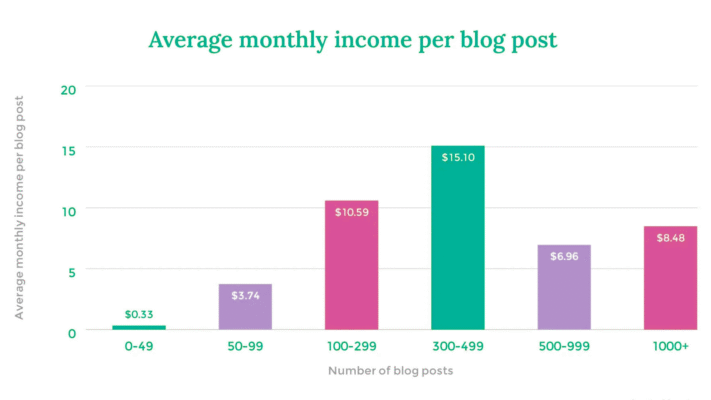
Meet Sarah, a Lifestyle Blogger:
-
Started in 2020 with 0 traffic and no experience.
-
Focused on SEO, Pinterest marketing, and detailed tutorials.
-
First monetization: AdSense, earning $50/month.
-
Added affiliate marketing for lifestyle and health products: $500/month within 6 months.
-
Launched her first ebook: $2,000 in revenue.
-
Current income in 2025: $15,000/month from ads, affiliates, and digital products.
Alt text: Blogger income growth example case study
Step 6: Build an Email List
Email marketing remains one of the highest ROI strategies.
-
Offer a lead magnet: free ebook, checklist, or mini-course.
-
Use email software like ConvertKit, Mailchimp, or ActiveCampaign.
-
Segment your audience to send personalized offers.
-
Promote products, courses, and affiliate links directly to your subscribers.
Pro Tip: Always focus on providing value first; your email list will respond better when they trust you.
-
Alt text: Example of email marketing automation for blogs
Step 7: Scale Your Blog with Automation & Delegation
Once the blog is generating consistent revenue, consider scaling strategies:
-
Hire Freelancers: Content writers, graphic designers, and virtual assistants.
-
Automate Social Media: Use tools like Buffer, Hootsuite, or SocialBee.
-
Outsource SEO & Marketing: Hire experts for technical SEO, backlink building, and email campaigns.
-
Repurpose Content: Convert blog posts into videos, podcasts, or social media posts.
Pro Tip: Focus on tasks that generate revenue; delegate everything else to free your time for strategy and growth.
Step 8: Analyze & Optimize Performance
Regularly monitor and improve your blog to maximize revenue:
-
Track page views, session duration, bounce rate, and conversions via Google Analytics.
-
Monitor affiliate clicks, sales, and ad performance.
-
Perform A/B testing on headlines, CTAs, and ad placements.
-
Update old content for SEO and relevancy.
-
Alt text: Blog performance analysis example
Step 9: Legal & Financial Considerations
When your blog starts generating significant income:
-
Register a Business: Helps with taxes, credibility, and brand protection.
-
Keep Records: Track expenses, revenue, and invoices.
-
Tax Compliance: Use local laws or hire an accountant to manage taxes.
-
Privacy & Terms Pages: Required for AdSense, affiliate marketing, and user trust.
-
Alt text: Privacy and terms pages for blog monetization
Step 10: Trends to Watch in 2025
-
AI Content Tools: Assist in content creation, but quality and uniqueness remain crucial.
-
Video & Short-Form Content: Blogs integrated with YouTube Shorts, TikTok, and Reels increase engagement.
-
Memberships & Patreon Models: Loyal audience can subscribe for premium content.
-
Voice Search Optimization: Optimize content for smart speakers and voice assistants.
The Path to Blogging Success
Make Money Blogging in 2025 offers unprecedented opportunities to earn money, build influence, and create a long-term business. By choosing the right niche, creating high-quality content, driving traffic, and implementing multiple monetization strategies, you can grow from earning a few dollars a month to a six-figure income.
Key Takeaways:
-
Focus on one monetization method at a time.
-
Build trust and authority through valuable content.
-
Track, optimize, and scale systematically.
-
Diversify income streams for stability and growth.
FAQs
Can you actually make money blogging?
Yes. Many bloggers earn six-figure incomes. Success depends on consistency, niche selection, and effective monetization strategies.
What should I blog about to Make Money Blogging?
Choose a niche based on passion, traffic potential, monetization opportunities, and competition.
How do I receive payments from Make Money Blogging?
Popular methods include PayPal, Payoneer, Wise, bank wire transfers, and crypto platforms like Coinbase.


This is the kind of quality content I love to see.